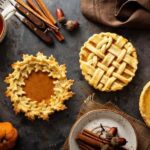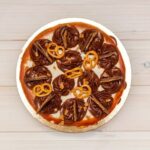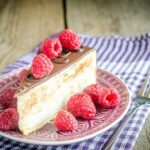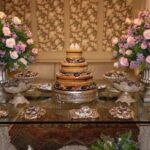Are you looking to add a unique and eye-catching element to your cake decorating? If so, then learning how to make bubbles for cake decorating is the perfect way to elevate your creations to the next level. Bubbles can add texture, dimension, and a touch of whimsy to any cake design, making them a popular choice for bakers and decorators alike.
In this article, we will explore the different techniques and methods for creating bubbles for cake decorating, as well as discuss the essential tools and ingredients needed to achieve stunning results. Whether you’re a beginner or a seasoned pro, mastering the art of making edible bubbles will open up a whole new world of creative possibilities in your cake decorating projects.
From choosing the right tools and ingredients to achieving flawless bubble designs, we’ve got you covered with expert tips and tricks that will help you take your cake decorating skills to new heights. So, let’s dive in and discover everything you need to know about making bubbles for cake decorating.
The Different Techniques of Making Bubbles
Creating bubbles for cake decorating can add a touch of whimsy and elegance to any confection. There are various techniques that can be used to make bubbles for cake decorating, each offering its own unique qualities and benefits. Below are some of the different methods you can explore when making bubbles for your cake designs:
- Using Molds: One of the easiest ways to create bubbles for cake decorating is by using silicone molds. These molds come in a variety of shapes and sizes, allowing you to customize your bubbles to fit the theme of your cake. Simply pour melted chocolate or sugar into the molds, let them set, and then carefully remove the bubble shapes from the mold.
- Sugar Work: Another popular method for making edible bubbles is through sugar work. This involves heating sugar to a high temperature until it reaches a hard crack stage, and then blowing it through a straw or pump to form delicate sugar spheres. This technique requires precision and practice but can result in stunning, transparent bubble decorations.
- Isomalt: Isomalt is a sugar substitute that can be melted down and used to create clear, glass-like bubbles for cake decorating. It is heat-resistant and sets quickly, making it an ideal choice for creating intricate bubble designs that will hold their shape.
By experimenting with these different techniques, you can achieve a wide range of bubble styles and textures for your cake creations. Whether you prefer the simplicity of using molds or want to master the art of sugar work, there are plenty of options available on how to make bubbles for cake decorating that will suit your skill level and design vision.
Choosing the Right Tools
When it comes to cake decorating, having the right tools can make all the difference in achieving the perfect look. For creating bubbles to use as decorations, there are a few essential tools that you will need. Here are some of the must-have items for successfully making bubbles for cake decorating:
1. Bubble Wand Molds: These handy molds come in various sizes and shapes, allowing you to create different styles of bubbles for your cakes. They are typically made of silicone or plastic and can be found at most baking supply stores or online.
2. Balloon Molds: Another popular tool for making bubbles for cake decorating is the balloon mold. These molds are designed to give your bubbles a realistic round shape, and they come in different sizes to suit your design needs.
3. Heat Gun or Torch: To achieve a smooth and clear finish on your sugar or isomalt bubbles, a heat gun or torch is essential. This tool will help you eliminate any imperfections and air bubbles from the surface of your edible decorations.
By having these essential tools on hand, you can ensure that you have everything you need to successfully create beautiful and professional-looking bubbles for your cake decorating projects. These tools will help you achieve the desired results and make the process of making bubbles for cake decorating much easier.
In addition to these tools mentioned here, there may be other specialized items that you may want to consider depending on the specific technique or method you choose to make bubbles for cake decorating. Each tool serves a unique purpose and can greatly impact how your bubble decorations turn out, so it’s important to select high-quality tools that suit your preferences and needs when embarking on this creative endeavor.
Selecting the Best Ingredients
When it comes to creating bubbles for cake decorating, selecting the right ingredients is crucial in achieving the perfect result. There are various types of ingredients that can be used to create edible bubbles, each with its own unique properties and benefits. In this section, we will explore the different types of ingredients commonly used in making edible bubbles for cake decorating, including sugar, gum paste, and isomalt.
Sugar
One of the most popular choices for creating edible bubbles is sugar. Sugar can be melted and molded into various shapes to create intricate bubble designs. It is important to use a high-quality granulated sugar for best results. Additionally, using a candy thermometer to monitor the temperature while melting the sugar is essential to prevent burning and ensure a smooth texture.
Gum Paste
Gum paste is another versatile ingredient that can be used to create edible bubbles for cake decorating. It is pliable and can be rolled out thinly to create delicate bubble structures. Gum paste can also be tinted with food coloring to achieve custom colors for bubble decorations. When working with gum paste, it is important to keep it covered at all times to prevent drying out and becoming brittle.
Isomalt
Isomalt has become increasingly popular in cake decorating due to its clear appearance and resistance to humidity. It can be melted and molded into bubble shapes with ease, making it a favorite ingredient for creating realistic bubble designs on cakes and desserts. Isomalt also has a higher resistance to melting compared to sugar, making it ideal for warm or humid environments.
By carefully selecting the right ingredients such as sugar, gum paste, or isomalt, cake decorators can explore various options in creating stunning edible bubble designs that will impress any audience. Experimenting with different ingredients will allow decorators to discover the unique qualities of each and find the perfect fit for their desired bubble decorations.
Tips for Achieving Perfect Bubbles
Creating beautiful and flawless bubbles for cake decorating requires the right techniques and tools. One way to achieve this is by using bubble wand molds. These molds are specifically designed to create perfect bubble shapes out of sugar, gum paste, or isomalt. By pouring the melted mixture into the mold and allowing it to set, you can easily achieve uniform bubbles that will elevate the overall look of your cake decorations.
Another method for making bubbles for cake decorating is by using balloon molds. This technique involves blowing up small balloons and dipping them into a sugar or isomalt mixture. Once the mixture has hardened, you can deflate the balloon and remove it, leaving behind a hollow bubble shape that can be placed on your cakes for a stunning effect.
Temperature control is crucial when making bubbles for cake decorating. The temperature of the melted sugar or isomalt must be carefully monitored to ensure that it reaches the right consistency for creating bubbles. Using a candy thermometer can help you achieve the perfect temperature for your mixture, resulting in flawless and uniform bubbles.
When handling the bubbles for cake decorating, it’s important to do so with care to prevent any breakage or damage. Gentle handling techniques are essential to maintaining the integrity of the bubbles and ensuring that they remain intact until they are placed on the cake. Additionally, allowing the bubbles to fully set before handling them is crucial in achieving flawless results.
| Technique | Result |
|---|---|
| Bubble Wand Molds | Perfect bubble shapes made from sugar, gum paste, or isomalt |
| Balloon Molds | Hollow bubble shapes created by dipping balloons in a sugar or isomalt mixture |
| Temperature Control | Achieving the perfect consistency for creating flawless and uniform bubbles |
Decorating With Bubbles
When it comes to cake decorating, incorporating bubbles into your design can add a touch of whimsy and elegance to your creations. There are various creative ways to utilize bubbles in cake decorating that can take your cakes to the next level.
One popular technique is creating bubble clusters, where edible bubbles are clustered together to form a visually stunning and unique decoration. Another creative approach is using edible paints to add vibrant colors and designs to the bubbles, making them stand out as a focal point of the cake.
To create bubble clusters for cake decorating, you will need to make a batch of edible bubbles using molds or sugar work techniques. Once the bubbles have been formed and set, they can then be arranged in groups of varying sizes on top of the cake. This creates a visually interesting and dynamic effect that instantly catches the eye. Additionally, using edible paints allows you to add beautiful designs and patterns to the bubbles themselves, allowing for endless customization options.
Using these methods in combination opens up countless possibilities for unique cake designs that are sure to impress. When utilized effectively, bubble decorations can transform an ordinary cake into a visually stunning masterpiece.
| Ingredient | Use |
|---|---|
| Sugar | Used with molds or sugar work techniques |
| Gum Paste | Ideal for creating more delicate and intricate bubble designs |
| Isomalt | Creates clear and translucent bubbles with a glass-like appearance |
With these different ingredients at your disposal, you can experiment with various textures and finishes to achieve the desired look for your bubble decorations. Remember that practice makes perfect, so don’t be afraid to try out different techniques and combinations until you find what works best for your specific cake decorating needs.
Troubleshooting Common Issues
When making bubbles for cake decorating, it’s common to encounter issues that may affect the overall outcome of your design. Understanding these problems and knowing how to troubleshoot them is essential for creating flawless and professional-looking bubble decorations. In this section, we will address some of the most common issues that may arise when making bubbles for cake decorating and provide solutions to overcome them.
Cracks and Breakage
One of the most prevalent problems when working with edible bubbles is experiencing cracks or breakage during the molding or handling process. This can be caused by using the wrong type of ingredients or improper techniques. To prevent cracks and breakage, ensure that your sugar or isomalt mixture is heated to the correct temperature and allow it to cool slightly before molding. Additionally, handle the bubbles with care and avoid sudden movements that could cause them to break.
Inconsistent Sizes
Another issue that might occur when making bubbles for cake decorating is producing inconsistent bubble sizes. This can be an aesthetic problem, especially if you’re aiming for a uniform look in your design. To achieve consistent bubble sizes, make sure to use a calibrated measuring tool for your ingredients and invest in high-quality molds designed specifically for creating uniform bubbles. Practice proper portioning of your mixture into the molds to ensure consistent results.
Cloudy Appearance
Sometimes, edible bubbles can develop a cloudy appearance, which may not give you the clear, glass-like effect you desire. This issue often arises due to incorrect cooking temperatures or improper handling methods. To achieve a clear and glossy finish on your edible bubbles, pay close attention to the temperature of your sugar or isomalt mixture as it cooks.
It’s also important to avoid introducing any moisture into the mixture as this can cause cloudiness. Properly store your finished bubbles in a dry environment to maintain their clarity.
By understanding these common problems when making bubbles for cake decorating and implementing the suggested solutions, you can overcome any challenges that may arise during the process. With practice and attention to detail, you’ll be able to create beautiful and professional-looking bubble decorations for your cakes.
Conclusion
In conclusion, mastering the art of creating bubbles for cake decorating can truly elevate the visual appeal of your confectionary creations. Whether you choose to utilize molds, sugar work, or isomalt, there are various techniques to achieve stunning bubble designs that will impress your guests and clients. By selecting the right tools and ingredients, as well as implementing expert tips for achieving perfect bubbles, you can ensure that your cake decorations stand out with flawless and uniform bubbles.
As you venture into the world of bubble cake decorating, remember to get creative with your designs. Experiment with different colors, sizes, and arrangements to showcase your unique style and personality. Whether you opt for intricate bubble clusters or incorporate edible paints for an artistic touch, the possibilities are endless when it comes to decorating with bubbles on cakes.
So go ahead and dive into the wonderful world of bubble cake decorating. With the knowledge and techniques gained from this guide, along with a dash of creativity, there’s no limit to what you can achieve in creating beautiful bubbly designs for your next cake masterpiece. Cheers to creating stunning edible bubbles that will leave a lasting impression on any occasion.
Frequently Asked Questions
How Do You Make Bubbles for a Cake?
Bubbles for a cake can be made using a bubble solution, such as dish soap and water, and blowing the bubbles onto the cake. The soap bubbles will then dry and leave behind a bubble-like effect on the cake.
Can You Make Gelatin Bubbles With Jello?
Gelatin bubbles can be made using unflavored gelatin mixed with water, heated, and then blown up into balloon shapes to dry. While Jello can technically be used, it may not create the same clear and firm bubbles that unflavored gelatin would.
How Long Do Gelatine Bubbles Last?
Gelatine bubbles can last for quite some time if kept in a sealed container in a cool, dry place. If stored properly, they can last for several weeks or even months without losing their shape or consistency.

Welcome to our cake decorating blog! My name is Destiny Flores, and I am the proud owner of a cake decorating business named Cake Karma. Our mission is to provide delicious, beautiful cakes for all occasions. We specialize in creating custom cakes that are tailored specifically to each customer’s individual needs and tastes.





